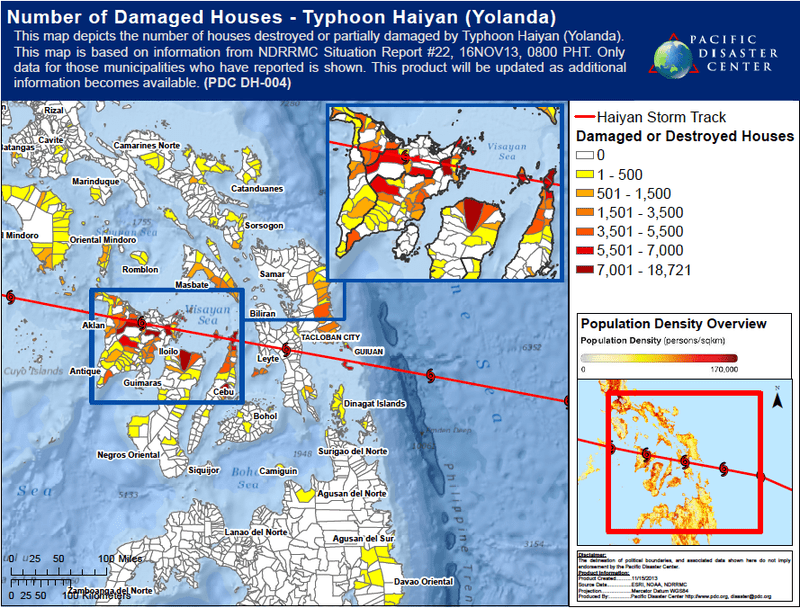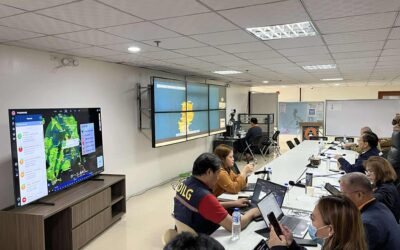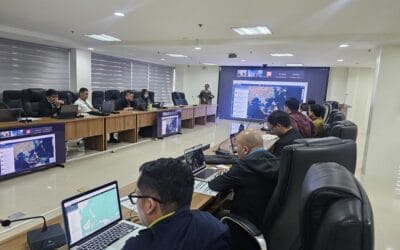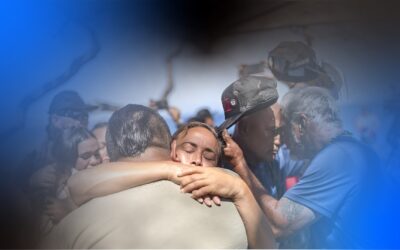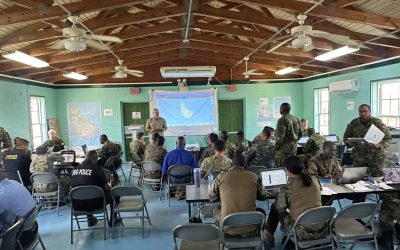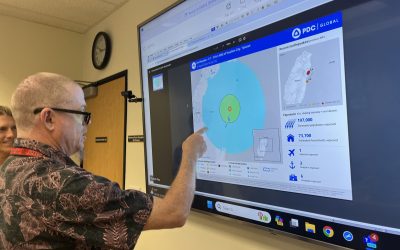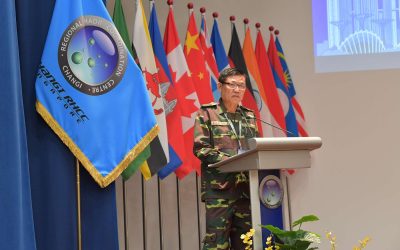Destruction caused by Super Typoon Haiyan (Yolanda) has galvanized the international community in a massive disaster response operation with many logistical issues. Despite the influx of humanitarian assistance, blocked roads and destroyed infrastructure have made it challenging to reach the hardest hit areas. The extensive damage has slowed the assessment and debris removal process delaying the movement of aid.
As of November 16 at 8:00 am, local time, the Philippine’s National Disaster Risk Reduction and Management Council (NDRRMC) confirmed 3,633 deaths and over 9 million people affected by the cyclone. The widespread devastation is making confirming casualties difficult. Latest United Nations (UN) Office for the Coordination of Humanitarian Affairs (OCHA) situation reports estimate 12.9 million people affected and 1.9 million displaced.
Joining the international response teams, Pacific Disaster Center (PDC) is deploying to the Philippines in support of the Rapid Technology Assessment Team (RTAT). RTAT is part of the U.N. Emergency Telecommunications Cluster and is attached to the U.S. 3rd Marine Expeditionary Brigade (3rd MEB). Team members include representatives from the United States Pacific Command (USPACOM) J6, the Naval Postgraduate School (NPS), and the World Food Programme (WFP).
To aid the communities involved in the relief and response efforts, PDC is currently developing damage maps based on official updates from the Philippines NDRRMC. Many of these maps are widely disseminated to the humanitarian community by ReliefWeb, a service provided by the UN-OCHA and is being shared through social media and via PDC’s DisasterAWARE platform.
Satellite imagery is being made available, as part of the International Charter, a global collaboration to provide rapid access to satellite data for natural and technological disasters. PDC has been designated as the project manager for the Philippines charter activation.
In addition, the Hawaii National Guard (HING) is the Philippines’ state partner through the U.S. National Guard’s State Partnership Program (SPP). PDC has been providing direct support to HING, as well as the Oregon National Guard, who is state partners with Vietnam, which was also impacted by the typhoon.
PDC activated before the storm made landfall, taking steps to increase the overall situational awareness of the potential impact of Haiyan. The Center has remained actively involved with U.S. and Philippine responding agencies, civil and military, as well as with international humanitarian organizations. PDC will continue to support response agencies as this disaster unfolds. If you are an emergency manager, and would like access to DisasterAWARE through EMOPS, click here for more information.
To find out more information on response to Typhoon Haiyan, visit some other directly supported agencies:
• US Aid for International Development Office of Foreign Disaster Affairs (USAID OFDA), UN World Food Programme (WFP), ASEAN Coordinating Centre for Humanitarian Assistance on disaster management (AHA Centre), the US Embassy in Manila, Vietnam Disaster Management Center, US Department of State, the Office of Environment and Emergency Management (OEEM; National Geospatial Intelligence Agency-NGA), US Northern Command (US NORTHCOM), US Army Pacific (USARPAC), US Army Corps of Engineers Pacific Office Division (USACE POD), and the Center for Excellence in Humanitarian Assistance and Disaster Management (CfE).
ABOUT PDC
Pacific Disaster Center (PDC) is a leading scientific innovator of global risk reduction science and technology. As a University of Hawai’i applied science and research center, our work intersects with a variety of government, community, academic, and scientific organizations at home and around the world to build resilience to natural and man-made hazards—enhancing the capacity to quickly and accurately anticipate and prepare for new and emerging threats. Our innovations in multi-hazard early warning systems, predictive analytics, data science, and machine learning provide decision-makers with the powerful tools and insights they need to navigate today’s complex and interconnected risk landscape.
